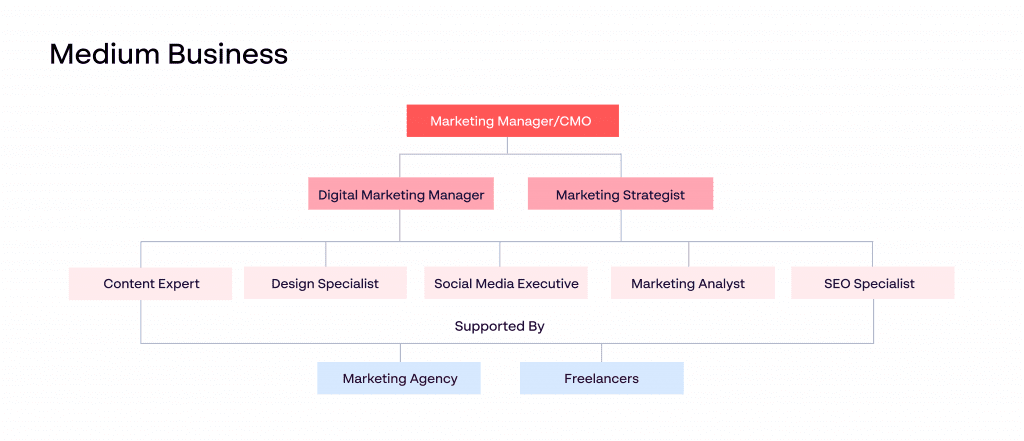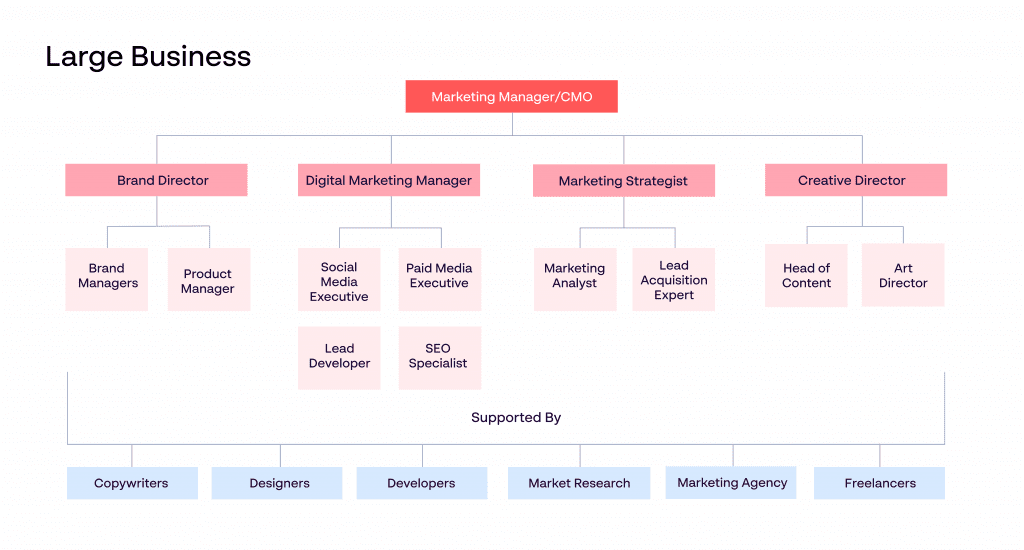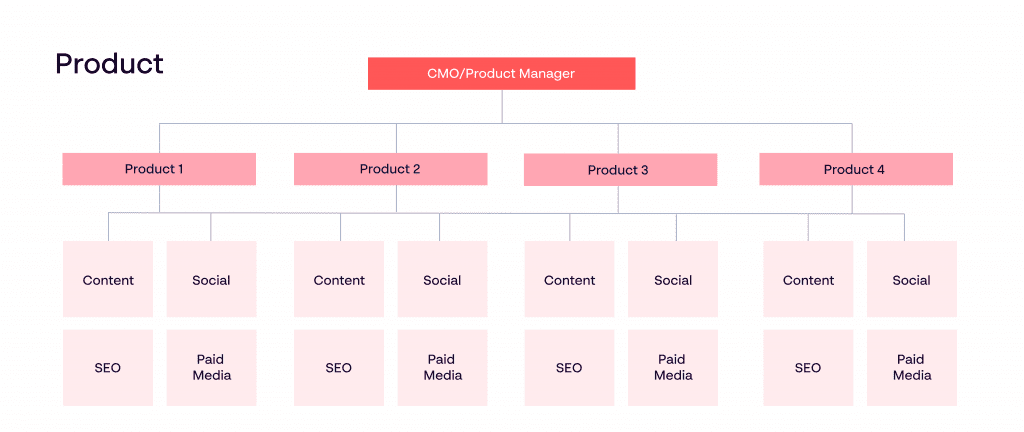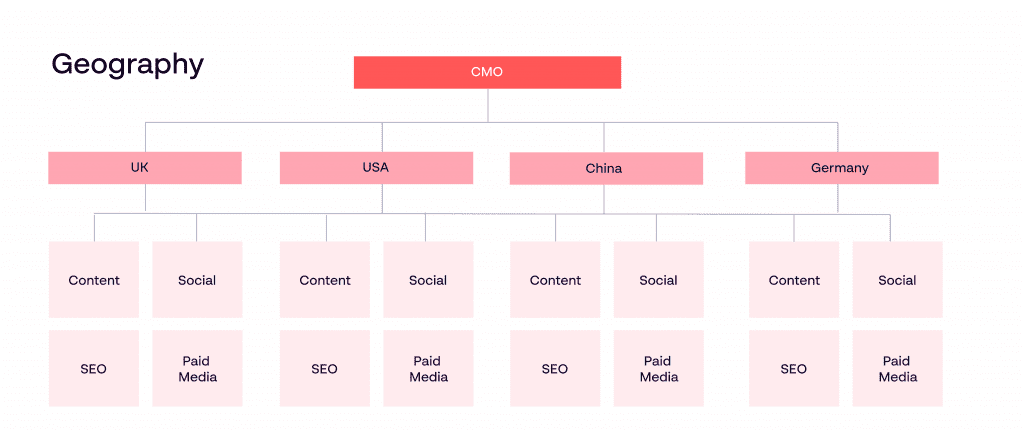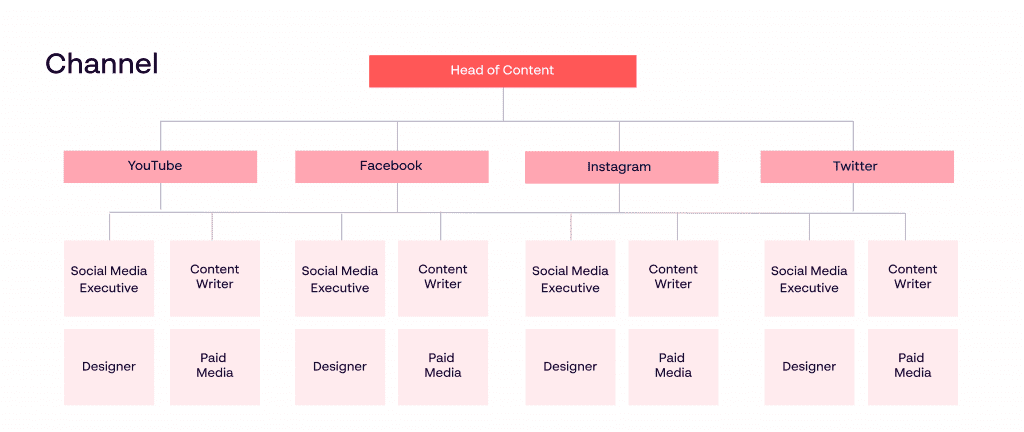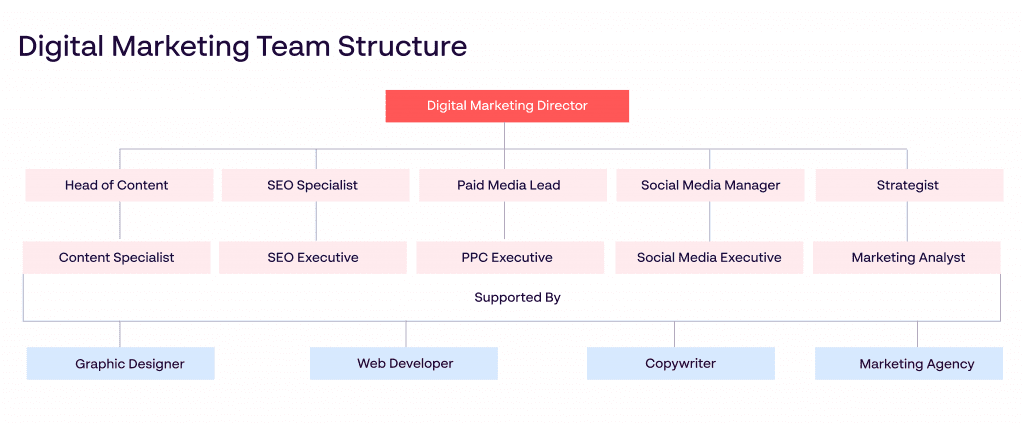Marketing is all around us. In our inboxes, on the side of the roads, on our televisions.
When the whole world has a product, service or idea to sell, only the strongest marketing strategies and creatives will be enough to cut through the noise.
It goes without saying that to grow into new markets, increase leads and raise brand awareness a business needs a successful marketing strategy in place.
To deliver an effective strategy, you either need an agency by your side that truly understands your business needs, or an in-house team that will help you to strategise, plan, execute and review your activity.
What is marketing?
Historically, types of marketing have been split into two overarching categories, traditional and digital. Traditional marketing includes anything from newspaper advertising and billboards to radio and direct mail. Digital marketing includes things such as Pay Per Click (PPC), Search Engine Optimisation (SEO) and social media marketing. One of the most significant differences between these two categories is that the latter provides much greater tracking of campaign effectiveness, whereas traditional methods are incredibly hard to quantify.
While digital marketing is certainly on top, traditional very much still has its place in the world. For example, if you were to promote over 70s life insurance, you’d likely be more inclined to use traditional channels to reach them over digital.
A definition of marketing
The concept of marketing means different things to different people. In a nutshell, it’s the what, why and how you communicate your product, service or idea to your target audiences.
In principle, you have a marketing strategy that includes your channels, audiences and personas, messaging strands, creative concepts and distribution calendar. But as the marketing landscape becomes ever more complex, it takes a dedicated team to constantly adapt and refine your digital and traditional marketing campaigns to stay ahead of the competition.
Most online definitions do tend to agree loosely that marketing revolves around the customers. And that’s important. From the initial concept of a product or service to the sale and aftercare, the customer should be at the heart of your business and marketing strategies.
People may come from different cultures and consume promotions in different ways. But what remains a constant when looking at marketing strategies is finding a way of communicating your sales message in a way real people will relate to. People don’t want to be sold to, they want to be informed, engaged and entertained. The art of selling through marketing is all about how you communicate.
People care about what your business can do for them. It’s about turning an insight, a pain point or a USP into something tangible for them. For example, you wouldn’t say ‘our design company is the coolest ever’, but you might say ‘fresh design that will bring your brand into the 21st century’.
The Four Ps
Known as the marketing mix, the traditional model of marketing used the Four Ps. These were:
- Product
- Price
- Place
- Promotion
When services, as well as a product, became marketable, the Four Ps developed into the Seven Ps and included:
- Participants
- Physical Evidence
- Processes
Then digital marketing made the experience of buying more personal. Consumers expectations increased exponentially. And while the marketing mix remains a reference point, it became only a small part of a much wider conversation.
The Four Cs
As the digital age advanced the Four Ps were seen as lacking and a modern version, the Four Cs evolved.
- Consumer
- Costs
- Convenience
- Communication
Here the focus changed from creating a product that a target group of customers wanted to buy, to creating products that satisfied a customer need.
Costs were still meant to cover overheads, but customers would set prices based on what they were prepared to pay. Marketers had to think about the cost of a consumer switching to a competitor.
Convenience meant making it as easy as it could be to get the product in your customers’ hands. And instead of promotion, communication became a two-way street. It was a conversation – “Hey brand XYZ. Do you know what would be really useful to go with that product I just bought?”
With the pace of change in online promotional techniques, it’s no longer a nice principle to put the customer at the heart of everything. It’s a necessity
Marketing techniques
Digital marketing software is constantly changing the environment, blending online and offline experiences into one journey. And as this collection becomes more and more exhaustive with the development of new technologies and platforms, discovering ways to streamline the marketing process has become increasingly valuable.
Without these, it would be exceptionally difficult for organisations of any size and experience to keep tabs on the extensive range of channels they can use to engage with their audience.
Here are just some of the common types of marketing companies today should be looking to utilise:
Internet marketing
Internet marketing is a more generic term to describe all aspects of promoting a business through the internet. Internet marketing might include using affiliates to generate sales in exchange for a commission or retargeting adverts that follow consumers around sites. As well as the other aspects of online marketing, explained below.
In-store marketing
Promoting your business or product in-store could mean handing out samples, the use of posters and point of sale, a catalogue or having a shop-in-shop experience.
Search engine optimisation
Having a site that ranks well on search engines, such a Google and Bing is important. SEO is the process of helping a site be optimised for getting great search results.
This includes keyword research, which uncovers the words and phrases that consumers are searching for, then building site content around those words. The ones that return the best information for customer search queries get ranked higher and visited more. Link-building to that content is another key aspect.
Content marketing
Creating good content builds relationships and gets you ranked well in search engines. But you want to promote it too. This might be through other sites or bloggers and if it’s great it might get a link to your site from a high-ranking newspaper site.
Social media marketing
Social media offers a huge marketing opportunity. Most platforms have monthly visits into the 100s of millions, so the reach is massive. Here marketers generally use a blend of organic posts and paid adverts to promote their businesses.
Search engine marketing is marketing to get yourself ranked highly in search engines. Whereas SEO is about building a site to get great returns in a search engine, SEM uses paid channels to achieve similar results. This means using paid-for strategies such as AdWords, or PPC as its also known. Like SEO keywords are crucial and you have to account for other factors such as ‘does an advert link through to the right page?’. These affect your quality score, which is a factor in how high up the search results your advert is displayed.
Video marketing
YouTube has become a powerful video marketing channel. Some businesses place adverts at the start of YouTube videos, that click through to the advertiser’s site. But there’s also an opportunity to use videos in an organic sense too. Many businesses create ‘how-to’ guides’ and as Google displays a snippet of the best videos at the top of its search results, as a business you have an opportunity to create videos that get ranked on the first page of Google.
Print marketing
These are the more traditional forms of marketing that would include newspaper adverts, billboards and flyers. Catalogues are another form of printed marketing, as are point of sale and posters.
Word of mouth
Word of mouth is one of the most powerful marketing tools there is. A good recommendation goes a long way. A more formal version of this would be a refer-a-friend scheme, where the referrer gets a reward for introducing the new customer to a business, and the referee gets a discount when they buy. PR and online reviews are other aspects of this.
Why marketing automation is important
The world of marketing is vast and ever-growing. Having things in place that can automate complex processes can help you relieve the burden of time-consuming and menial tasks, and allow you to collate, manage and analyse the data that’s collected alongside it.
There are many tools out there that can make your team’s lives easier, ranging from email marketing platforms, keyword research tools, design programmes, social media publishers and more. The landscape is vast and there’s no limit to what you can achieve with the right marketing automation tools at your disposal.
What is digital marketing?
Even more people are spending time online. And remember the third C in the four Cs marketing mix – ‘convenience’. Putting these two pieces of information together means getting your product in front of the customer in a way that’s convenient for them.
Digital, in a traditional sense, really means promoting online. But don’t think of digital marketing in a purely online environment.
An example is a printer sending a report to the supplier that you’re out of ink. You pay for a subscription and get the ink replaced when it’s needed. As a consumer you likely don’t care about online or offline, you just care about not running out of ink.
So, when creating your digital marketing strategy, you will need to consider how each element plays its part in your marketing campaign and business goals.
The digital landscape
So digital marketing really is the set of tactics needed to connect with customers where they spend the most time. These tactics may include:
- Search engine optimisation – optimising your site to rank high in search engines, such as Google
- Search engine marketing – using AdWords and other PPC,
- Online ads – using social media, PPC, retargeting, or adverts on sites YouTube
- Affiliates – a link to your site in exchange for a portion of the sale, or promoting on voucher sites
- Social media – using organic posts and adverts
- Blogs – writing website content for your site or guest blogging on other sites
- Emails – building a database of email addresses that you can remarket to and automation of sales emails in the customer journey
- Mobile apps – placing adverts in games and apps on smartphones
- SMS messaging – sending texts to prospects and customers
As pretty much everything to do with digital marketing can be measured, it’s a great way to refine and improve campaigns. One subject line worked better than another? Why? Was it a particular word? Was it the offer? How can we replicate this for future campaigns?
Measuring your success allows you to refine any messages, remove the ones that aren’t working and improve on the ones that are. You can also work out where the budget is being spent most effectively.
The problem is, without a dedicated team or employee, could digital mean data overload – are you filtering out what’s important, and when it comes to qualitative data, has it been interpreted properly?
But offline and online are all coming together into one big marketing mix. Online would traditionally be when a consumer is sat in front of a computer screen. Offline is when they aren’t… but the lines have blurred. And this blurring is known as online-to-offline marketing.
Online-to-offline – O2O – is this where marketing is going?
Customer journeys aren’t just made offline, or online. Today they’re just a journey. A person shops in-store but buys on a phone while there. They buy online and collect from a nearby store. It’s sometimes called O2O marketing, or online-to-offline.
Other examples of this type of marketing would include:
- Interactive Billboards
- Digital product demos and samples
- Radio adverts
- Sponsoring television shows
- Televisions ads
- Tele-shopping
- Phone marketing
- Cold calling and following up with an email
- SMS (text message) marketing
- QR codes
It’s an all-encompassing journey where the only consistent thing is the customer, and of course, your brand.
What is direct marketing?
When you sell directly to a customer it’s usually a form of direct marketing. When you look at the difference between this type of marketing and advertising as another form, think about the difference between a push and a pull.
Advertising pushes out to an audience. The job of direct marketing is to pull in a response – for example, a website or in-store visit, an invitation to send for more information, or to generate a sale. Traditional adverts can be direct response too.
Direct Response Television is also very popular. The long-form version of direct response television was once known as the infomercial, those seriously clever 28-minute ads that have you reaching for your wallet in no time. The demographics of direct television respondents show that 79% are homeowners aged between 35-45 and 53% are professionals – perhaps not an audience you’d expect to see?
The other most common forms of direct response are:
- Brochures
- Direct mail
- Flyers/leaflets
- Newsletters
- Postcards
- Mailers/letters
- Coupons
- Emails
- Targeted online display ads
- Phone calls and SMS text messages
Junk mail is perhaps the most famous form of direct mail. More politely known as circulars, these are the speculative letters that tend to pile up on your doorstep if you don’t tackle them daily. Most organisations with a good blend of marketing channels frequently use them.
While the marketing focus is undoubtedly on digital, some companies still use circulars because they work for them. Google, Apple and Ikea are some of the big names that use direct mail. It’s highly trackable, is great for supporting a digital campaign and increases your ROI.
When you’re being bombarded by a digital world, with ads, emails and retargeting it’s perhaps a good strategy to stand out in a different way. And it’s harder to ignore something physical, compared to say email, where for consumers it’s a case of easy come, easy go.
With a direct mail piece, there’s an incredible opportunity to be highly creative too, but of course, all effective direct mail starts with data.
Creating effective direct mail
Make sure your data is good – people move and old addresses really won’t help. What’re more people get disproportionately upset when their name is spelt wrong on junk mail. And make sure you’re compliant with laws such as GDPR. While you don’t need explicit consent to send direct mail, you do need to make sure there is a legitimate interest. Has that person visited your store? That’s a legitimate interest in what you have to say.
Personalise – you’ll see an increase in opens and therefore an increase in responses, but go beyond a first name. Marketing software allows all sorts of levels of personalisation, such as personalising images. Make your customers feel special.
Targeting – similar to having good data, your targets need to be good. Bad data is a risk with buying lists, as people may have signed up in exchange for the chance to enter a big prize holiday, but not be interested in what you are promoting. Selling fences to bricklayers just won’t work, even if your creative is award-worthy.
Test different approaches – testing and refining is key to effective direct mail. Business who have tested different messages, even tested whether to include a pre-paid reply envelope or not, found a winning control and then run with it until it’s beaten.
There are three key messages to take away here if and when considering direct mail: weigh up whether it’s a cost-effective route to your audience, testing is always best, and don’t fix what isn’t broken. When you have a winner, don’t discard it until it’s run its course.
What is content marketing?
Websites and social media, they’re all about content. Content is king, wrote Bill Gates in 1996. And it is (even if that phrase has been somewhat overcooked).
But if content is king, context is queen. In a world where non-marketers can create a video on their way to work, are we suffering from a content overload?
Brilliant website content is not about creating reams of rich media or delivering highly creative yet ineffective marketing pieces. Done well, content is a strategy not a tactic, that generates leads or brings in new ones.
Some organisations’ financial departments may want to see content as an immediate means to generate a sale and look for a return on their content investment. But content is about creating an ongoing relationship and helping to define your brand’s personality. It’s a marketing strategy to support sales, and it won’t work in isolation.
The content marketing institute defines it like this:
“Content marketing is a strategic marketing approach focused on creating and distributing valuable, relevant, and consistent content to attract and retain a clearly-defined audience — and, ultimately, to drive profitable customer action.”
They suggest these five core elements for creating a proper content framework.
- Purpose and Goals – why you are creating content, and what value it will provide?
- Audience – who you are creating content for, and how they will benefit
- Story – what specific, unique, and valuable ideas will you build your content assets around?
- Process – how will you structure and manage your operations in order to activate your plans?
- Measurement – how you will gauge performance and continually optimise your efforts?
What outcomes can you expect?
Content isn’t designed to be a replacement for any of your other marketing efforts. Instead quality content will make those work better and more efficiently, by providing genuine value to your existing audience and prospects.
What makes good content?
Understanding your audience is important. So are these:
- Make it original
- Write brilliant headlines
- Is it practical advice that readers can actually use?
- Is it engaging, thought-provoking and accurate?
- Make every word count. That means losing the fluff
- Videos and images are crucial
- Keep it entertaining, show your expertise and make it worth the time to read
Some basic content marketing metrics
A general rule in marketing is having measurable goals. These are some useful metrics to measure your content marketing success against your goals:
- Users – showing the number of unique visitors to a particular page
- Pageviews – shows how many times a page is viewed
- Unique Pageviews – shows the number of times a page was viewed during a session
- Location – useful for creating and marketing customised content for specific audiences
- Source/Medium – shows which channel your content was consumed, so you can tailor what you create
But it’s key you set goals with actionable metrics.
What is social media marketing?
Social media marketing is huge. Once just a single ingredient in the marketing mix, its significance and effectiveness have grown – now the largest companies have teams of people dedicated to social media marketing strategy.
For example, Facebook, Twitter and YouTube will be among the best ways of reaching out to generation Y, if that’s your target audience. LinkedIn is the best way to attract professionals.
Although each social media platform was created with a different function or aim, the term social media marketing is about getting traffic or attention through them.
Marketing through social channels will include a mix of paid adverts, posting organic content and perhaps paying to boost organic content, to get it in front of more people. Social media is also where people have conversations.
But it’s not single direction marketing, from brand to audience, instead it’s a 360-degree experience with the audience at the centre.
Social media strategy
A social media strategy, on the face of it, is not so different from others. You need to:
- Set achievable goals
- Understand your audience
- Define your metrics
- Monitor the competition
- Create and curate engaging content
- Prioritise timelines
- Test and refine
Take as an example the differences between Twitter and Facebook. Twitter is a short update site, whereas Facebook allows videos, images for the full sharing of personal experiences.
Broadly speaking, a powerful social media strategy is good for:
- Increasing traffic to your website
- Increasing website conversions
- Brand building and awareness
- Talking to your audience
Social media strategy tips:
Here are some general tips for marketing on social media:
- Don’t start without a strategy
- Look at what other people are doing, look at what’s been successful for competitors and see what you can learn from that
- Use social to support other marketing campaigns
- Use social media for getting customer feedback about products or testing new lines
- If your business is online, ensure you have the infrastructure in place to provide customer service on social media. Some people only use social to contact businesses
- Encourage customers to tell the world if they’ve had a good experience with your company
- Listen to what people are saying about your business, your competitors or your market
- Let people buy direct from you with social shopping
- Use retargeting when someone leaves your site or shop without buying
Facebook marketing
One of the biggest and you should definitely be active here. Facebook is informal and relaxed. So don’t make it all about product sales. Having said that 97% of companies that use social advertising chose Facebook as their most used and most useful social media platform. And the 25 to 34 is the most common age demographic.
Do:
- Create a business page
- Post images and videos
- Consider running ads and boosting posts to support organic content
Twitter marketing
Twitter is good for communicating, and its limited character count is designed to keep conversations short, snappy and focused. Many have found it to be an extension of their customer services too and 88% of social advertisers use Twitter. Keep your content varied and don’t be sucked into posting the same here as on other social channels.
Do:
- Keep up the dialogue
- Follow influencers and people in your industry
- Retweet positive customer experiences
YouTube marketing
As well as being the number one portal for video, it’s great for marketing. Share videos from YouTube to other channels, and if you have a great video strategy you could find yourself at the top of Google SEO rankings in the video snippets.
Do:
- As with site content, make video content useful
- Create ‘How To’ and instructional guides
- Viral is great but don’t focus on it – focus on being authentic
LinkedIn marketing
It’s social media for career professionals. It’s where industries talk, share information and share jobs. Employees network here too. LinkedIn says that 630 million professionals use its tools and that it’s rated the number 1 platform for lead generation. 80% of social media B2B leads come from LinkedIn. If you’re a brand looking to hire staff or generate business, you can’t afford to ignore LinkedIn.
Do:
- Try to establish yourself as an expert
- Earn recommendations
- Join groups/create your own
- Post high-quality content
There are a lot of social sites, and each has its own very specific set of rules from character count to image shape and size. To effectively market on these channels, you’ll need to learn the functional basics, as well as develop the content appropriate to each.
What is a marketing strategy?
Most major marketing plans start with a blueprint, to take them through from start to finish. And an important starting point in any marketing endeavour is to be realistic about where you are.
The Four Ps or Four Cs, as mentioned earlier or the more detailed Seven Ps, a variation on the 4Ps, are all versions of a marketing strategy. A marketing plan combines all the strategies, based on the organisational objectives.
Marketing strategies are unique to your organisation’s goals and set of circumstances. But having a framework is a good place to start. The marketing framework known as SOSTAC is a popular one.
Developed in the 1990s by PR Smith, SOSTAC is an acronym that stands for:
- Situation
- Objectives
- Strategy
- Tactics
- Actions
- Control
This framework can help you develop marketing strategies with a view to writing marketing plans.
What is a marketing plan?
Situation
Before understanding where you want to be, it starts with understanding where you are. And success depends on you being realistic too.
Carry out a SWOT analysis – strengths, weaknesses, opportunities and threats – these mini-plans help give you an overall view of where you are, and also can inform your plan as to where you need to focus. Is a threat a new competitor’s service? Is there an opportunity for a new line? Getting these elements down on paper will really help give your plan some focus.
You could dive deeper here too. Doing a PESTLE analysis (there are variations on PESTLE but the idea is the same) can help get these even more detailed.
PESTLE looks at the situation from a Political, Economic, Social, Technological, Legal and Environmental perspective. For example, a government in one market may be about to relax the rules on services that your business is selling. Or technological advances may mean that the way your service is delivered will drastically change.
Once you know where you are the next question in SOSTAC is where do you want to be?
Marketing objectives
It’s pretty self-explanatory, but what are your objectives? Where do you want to be? Once you have understood your challenges and know where you need to be you can fill in the next part of the plan.
What is your business vision? What KPIs are important?
Make your objectives measurable and set time limits as milestones. Will you check progress after 30 days, 60 days, 90 days? Or all of them? Who is responsible for making these happen?
Incorporate SMART objectives – that is specific, measurable, actionable, realistic and time-bound. It will help you stick to the plans.
Marketing strategy
How will you get there? Look at this in terms of meeting the objectives you’ve set. This is one of the most important areas, so while the analysis of where you are is key, changes can only happen when you create a strategy. You know what’s happening, and what you want but crucially you need to have a proper plan to get there. This might include:
Marketing segmentation and how you target
What is your product/brand positioning?
What channels you’ll use for communicating with your audience
What messages will you use?
Once you have the strategy mapped out you need to get detailed and talk tactics. Think of strategy as the big picture of what you’re going to do to achieve those objectives. Your overall plan will likely include more than one strategy, taking into account the different channels, media and audience.
Tactics and actions
If you’ve identified that better SEO is an objective, for example, a tactic would be to conduct keyword research. And you might create a three-month calendar with actions to support it.
You might detail which keywords are being targeted in a pay-per-click campaign. Are the landing pages the correct ones? Who is responsible for which elements? With so much to consider, it’s important you plan ahead, ensuring you have the right resources in place to keep things moving.
Build in milestones to help measure if things are working and be prepared to change plans if those KPIs aren’t being met as expected.
Test and refine
Control is the ‘final’ part of PR Smith’s marketing approach, where the actions, tactics and strategy are monitored. It’s the test and refine process, where you see if the strategy has worked, and if it needs any adjustments.
It feeds directly into the Situation where you can ask the starting question again – where are we now? Were the targets met? If not, what is the next step?
Overall, a marketing strategy will show how you will achieve a particular mission or goal.
How marketing helps businesses
Promoting your business
You need customers to succeed in business and marketing is what puts you in touch with those people. Marketing helps promote your business, products and brand to new and existing customers.
Better sales
Marketing increases the chances of someone buying what you’re selling. If they have a good experience, they’ll tell more people. If your campaigns are effective, you’ll see more conversions.
Relationships
Marketing helps build relationships between your business and the customer. These relationships can inform new product ranges, will create dialogue between your organisation and customers, and help create loyal customers that could spend more, more frequently.
Your reputation
Much is said about brand value and brand equity, and marketing your business will enhance its reputation. Every piece of marketing will build trust between your organisation and the customer or potential customers and will inspire their confidence when it comes to purchasing.
Healthy competition
Marketing promotes healthy competition between businesses within an industry. But it can also give you a strategic advantage over rivals too. Your customers will be the real winners here as products and services get better at more competitive prices. If you’re significantly more advanced than a competitor, marketing gives you a channel to exploit this.
Principles of marketing
When it comes to sales and marketing, using the theory and strategies outlined here will help provide the blueprint of a strong plan for your organisation.
Understand where you are, where you want to be and how each channel works.
Keep your messaging and branding consistent and measure everything you can. Build in milestones and be prepared to change the plan if needed. If an area of your marketing is suffering, look for ways to take the pressure off. Explore automation in certain areas, get in professionals for help when needed and explore whether different software could help with the planning, management and delivery of campaigns.






